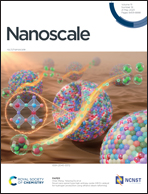Energy-level engineering of carbon dots through a post-synthetic treatment with acids and amines†
Abstract
Chemically synthesized carbon dots (CDs) have attracted a lot of attention as an eco-friendly and cost-efficient light-emitting material, and functionalization of CD surfaces with additives of different natures is a useful way to control their properties. In this study, we show how a post-synthetic treatment of CDs with citric acid, benzoic acid, urea and o-phenylenediamine changes their chemical composition and optical properties. In particular, it results in the formation of carboxyl/imide/carbonyl groups at the CD surface, leading to the appearance of additional blue (or for CDs treated with phenylenediamine, blue and green) emissive optical centers on top of the remaining emission from the original CDs. Most importantly, the increased oxidation degree alongside a decreased relative amount of carbon and nitrogen in such treated CDs decreases their highest occupied molecular orbital (HOMO) energy level by up to 0.9 eV (the maximal value was observed for CDs treated with o-phenylenediamine). Moreover, the Fermi energy level shifted above the lowest unoccupied molecular orbital (LUMO) energy level for some of the treated CD samples. Thus, the energy structure of CDs can be tuned and optimized for further applications through the functionalization of their surface with organic additives.



 Please wait while we load your content...
Please wait while we load your content...